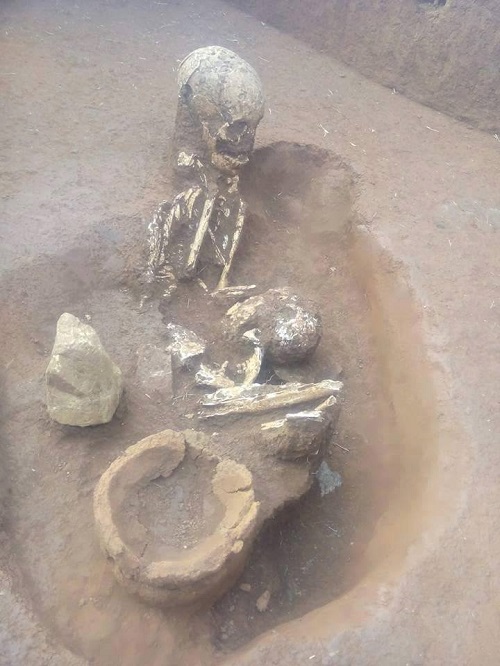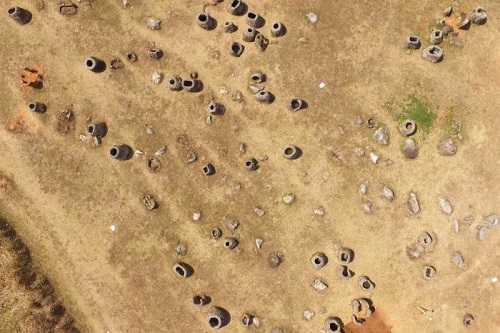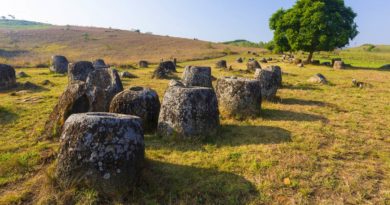Plain of Jars Gives Up Well-Kept Secret
“Tourists who visit the Plain of Jars Site 1 in Paek district, Xieng Khuang province, have no idea that one of the jars has a male figure carved on the outside,” Mr Phousavanh Vorasing says excitedly.
Mr Phousavanh, who is an official at the provincial Department of Information, Culture and Tourism, said on Thursday “Tour guides fail to show visitors the carving, as it can only be seen on one of 338 jars at the site.”
Each year, some 5,000 visitors from Laos and abroad visit the site, travelling mostly in families or tour groups.
The larger tour groups typically come with a guide, but smaller groups do not hire a guide as they want to reduce their expenses.
Mr Phousavanh said that the larger jars are the most popular with tourists, who always want their picture taken next to one. The jar with the carving in its side is ignored because is it relatively small, and visitors do not know of its existence.
In fact, this jar is one of the most important as it provides clues about the origins of the jars in regard to Lao traditions and culture in ancient times .
A recent visitor to the site from Vientiane, Mr Phoutsavong Phatsouda, said he and his friends went there on two-night, three-day trip. “I’d been to the Plain of Jars Site 1 several times but this was the first time I’d been shown the carving by a tour guide,” he said.
“I am very impressed with Xieng Khuang because of the diverse natural beauty of the forests, limestone mountains, green valleys and rolling grasslands, which seem to remain unchanged.”
According to the tourism information office in the provincial capital Phonsavanh, over the past few years more than 28,000 tourists have visited Xieng Khuang province.
The Plain of Jars is one of the biggest attractions for local and foreign travellers and will soon be declared a UNESCO World Heritage Site. Extensive archaeological studies have established that the average age of the large stone jars is about 2,000 years.
Xieng Khuang authorities currently receive assistance from UNESCO and government agencies to develop sustainable and responsible tourism at the jar sites and other visitor attractions.
The goal is to develop locally managed tourism centred on the Plain of Jars that involves and benefits local people and will help the provincial authorities with much needed revenue to protect historic sites and natural attractions.
The revenue generated from tour groups will help the authorities to achieve their vision of sustainable tourism, which will protect the cultural heritage of Xieng Khuang and provide a better life for nearby rural communities.
Source: Vientiane Times




